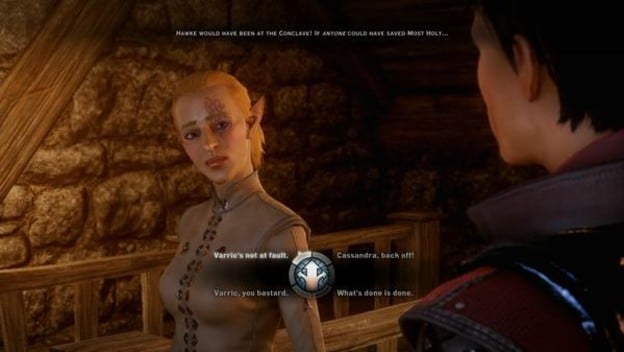People have strong feelings about Dragon Age II . While many can come to the decision that, if it was a stand alone game, it would be more than adequate, it was a definite letdown when compared to its predecessor, Dragon Age: Origins , and successor, Dragon Age: Inquisition . However, after over 60 hours spent with the game, I maintain that we all needed Dragon Age II to happen before Dragon Age: Inquisition , even though it isn’t the game many thought we deserved.
I fear some spoilers for every Dragon Age installment are now necessary, so forgive my forthcoming assertions. Dragon Age: Origins was an undeniably amazing game, but when you look chronologically at the series, the importance of Dragon Age II can be seen. While Origins introduced us to the world, II provided the history that Dragon Age: Inquisition desperately needed.
Dragon Age II set up four important story elements of Dragon Age: Inquisition. The first is the introduction of Varric Tethras. His Deep Roads adventure in the second game set in motion the events of not only that installment, but of Inquisition as well. This brought Hawke into power, introduced Anders to the group, and introduced the lethal Red Lyrium to the surface. His expedition started it all, and his constant presence in both games is a reminder that the butterfly effect is a very real force.
It was in Dragon Age II that we first saw the destructive abilities and irresistible allure of Red Lyrium. This substance plays an even larger role in Dragon Age: Inquisition , and indeed its spread from that initial discovery plays an important part of the storyline. Such an important property couldn’t have been “introduced” in the third game. We needed to be there for its discovery and get an early glimpse at how dangerous this substance was. We wouldn’t have recognized and understood it otherwise.
Then, there’s Anders. One of the major Dragon Age: Inquisition conflicts is the war between Templars and the Circle of Magi. We saw hints of unrest in Dragon Age” Origins , but not enough to jump to a full-on war. The sequel’s story allowed the tension to build and for players to see firsthand the kind of event that could send both sides to arms. It wouldn’t have been good storytelling if BioWare had told us what happened between Origins and Inquisition . We had to see Anders go overboard and kickstart it in Dragon Age II .

Which brings us to Corypheus. When he was introduced to players in Dragon Age II ‘s Legacy DLC, the creature was something of a Chekhov’s gun. He was the add-on’s big bad, a interesting tidbit for people who were always interested in the lore that stated Tevinter Magisters were responsible for Darkspawn. He was a challenge, but could have been dismissed as a throwaway boss. Now that Dragon Age: Inquisition is here and he has been revealed as villain, we see how vital the previous game was to his introduction. Someone so important and crucial to the mythos couldn’t just appear in Inquisition . We needed to see his awakening. Not having one would have been sloppy storytelling.
Dragon Age II was an adequate game. It wasn’t perfect and it was easy to hate on. However, in hindsight, we can now see that it may have been quickly thrown together and sloppy, but was quite important. Bioware could have jumped from Dragon Age: Origins to Dragon Age: Inquisition , but we all benefit from having many elements introduced in the second installment, even if it wasn’t of as high a quality as the other games. When all three games are viewed as a whole, it’s plain to see each one provides important insights into the world of Thedas.
